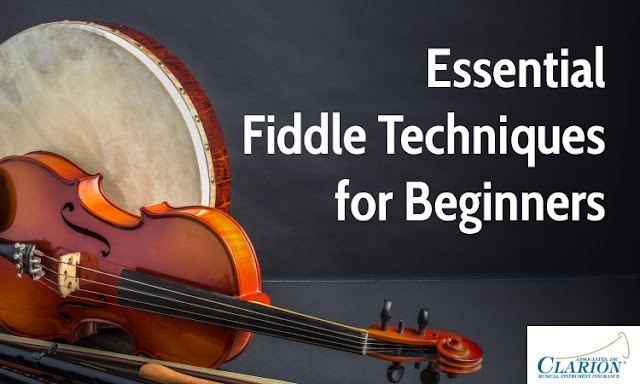Have you ever been captivated by the lively tunes of a fiddle? If you are attempting to pick up this instrument and join the musical adventure, you are in for a treat! The fiddle may seem tricky at first, but with some practice and these essential techniques under your belt, you will be well on your way to unlocking its expressive potential.
This guide will break down the key areas every beginner needs to focus on to build a strong foundation.
1. Setting the Stage: Posture and Instrument Position
Imagine yourself as a confident fiddle player, effortlessly drawing beautiful melodies from the instrument. Do you want to make this dream come true? Well! The first step to achieving that image is finding a comfortable posture. It not only prevents strain but also allows for smooth playing.
• Standing Tall: When standing, keep your feet shoulder-width apart for balance. The gear should rest comfortably on your left collarbone, held in place by your chin. Make sure not to grip it tightly. Let your left arm hang naturally with a slight bend at the elbow, and your right arm should move freely at the shoulder, holding the bow.
• Sitting Pretty: If you prefer to play seated, choose a chair with good back support. The fiddle's position is similar to standing, with the scroll resting on your left shoulder. Remember to maintain a straight back and avoid hunching over the instrument.
2. Left Hand Fingering
The left hand is responsible for fretting the strings, creating different pitches. Go through the following pointers to get a hang of it:
• Finger placement: Fingers should be curved and placed directly on the fingertips on the fingerboard, not on the side. Each finger has a designated position: the first finger closest to the nut (headstock), followed by the second, third, and fourth fingers.
• Intonation: Pressing down too lightly can result in notes that are out of tune (sharp). On the contrary, pressing too hard can create buzzing sounds. Make sure to practice finding the sweet spot for crystal clear and accurate notes.
• Finger shifts: As you move up and down the fingerboard to play different notes, smoothly shift your hand position entirely while holding finger curvature.
3. Right Hand Bowing
The right hand uses the bow to create sound by drawing it across the strings. Mastering proper bowing techniques is essential for producing a beautiful and controlled tone.
• Bow hold: Grip the bow near the frog (end closest to you) with a relaxed hand. The thumb rests on the side of the frog, and the other fingers naturally curve around the stick. Avoid gripping the bow too tightly.
• Bowing direction: There are two basic bow strokes: down bow (moving the bow away from you) and up bow (moving the bow towards you). Practice making smooth and even strokes across the strings at the middle (bow point).
• Bow control: Varying bow speed and pressure affect the volume and tone. Experiment with slow, deliberate bows for a sustained sound and faster, lighter bows for a brighter tone.
4. The Master Stroke to Protect Your String
While the techniques mentioned above will help you master the art of playing the fiddle, the step that we are going to discuss here will take you a long way. So, consider it as a life lesson. And it is about getting a dedicated fiddle insurance plan. Not home or renter’s insurance, but a specialized one.
Having a standalone and comprehensive insurance will ensure your string is protected against the uncertainties of life, giving you immense peace of mind. You will find several insurance providers in the market.
Pro-Tip
Remember, mastering these techniques takes time and dedication, but the journey itself is rewarding and full of musical discovery. So, stay safe, be wise, and get your string insured.

No comments:
Post a Comment